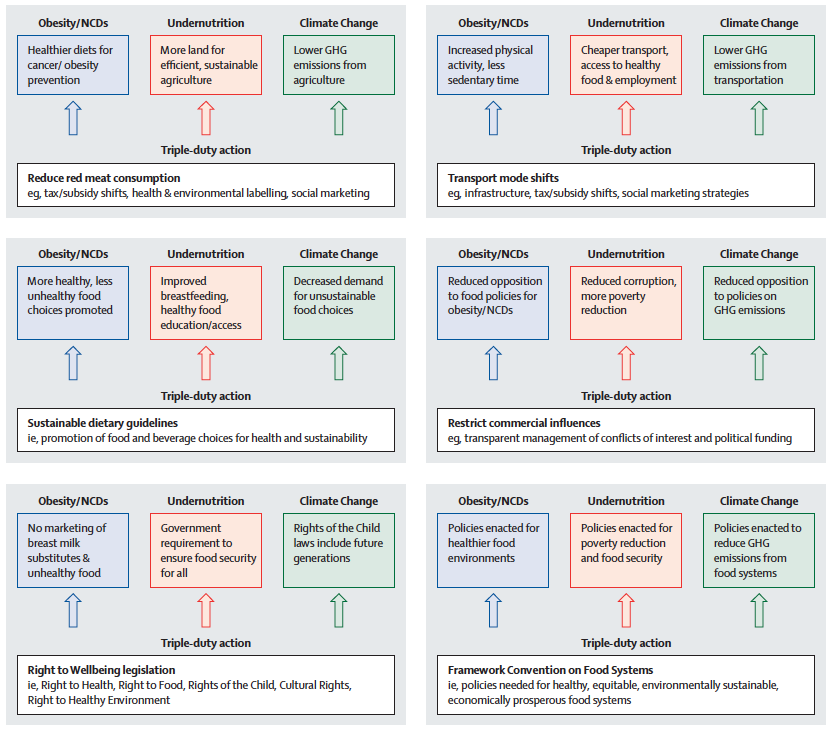Food Bytes is a weekly blog post of “nibbles” of information on all things food and nutrition science, policy and culture.
Since the publication of the Food in the Anthropocene: the EAT–Lancet Commission on healthy diets from sustainable food systems,” there have been some thoughtful critiques on the paper. Lawrence Haddad of GAIN and some other GAIN colleagues published what they felt were omissions but also the opportunities for more research, dialogue and debate. Over at the New Food Economy, Sam Bloch tried to eat the planetary health diet for one week. He struggled. He cooked almost all his meals, and he found the diet more expensive. I think he was a bit extreme, forgoing coffee and spices, which is not really recommended, but A effort in at least trying to take the lofty goals of the report and giving some practical insights into whether one can consume this diet on a daily basis. But don’t throw the baby out with the bathwater just yet. There are many attempts to ensure plant-based diets and vegan cuisine are tasty to our picky palates. Restaurants and food companies are trying new recipes and using new technology to ensure that vegetables make our mouths water just as much as those pavlov-dog-drooling juicy steaks do.
Another Lancet journal commission report was published last week on the “Global Syndemic of Obesity, Undernutrition, and Climate Change.” What is a syndemic one might ask? It is a synergy of pandemics that co-occur in time and place, interact with each other, and share common underlying societal drivers. Oh. Sounds serious. Well, in this case, it is. The pandemics are climate change and malnutrition - that being undernutrition and obesity. All three affect most people in every country. They give this example:
“Food systems not only drive the obesity and undernutrition pandemics but also generate 25-30% of greenhouse gas emissions (GHGs), and cattle production accounts for over half of those. Car-dominated transportation systems support sedentary lifestyles and generate between 14-25% of GHGs. Underpinning all of these are weak political governance systems, the unchallenged economic pursuit of GDP growth, and the powerful commercial engineering of overconsumption. The outcomes of obesity, undernutrition, and climate change interact. For example, climate change will increase undernutrition through increased food insecurity from extreme weather events, droughts, and shifts in agriculture. Likewise, fetal and infant undernutrition increases the risk of adult obesity. The effects of climate change on obesity and vice versa are currently uncertain.”
The Commissioners argue that double and triple duty actions are necessary to address The Global Syndemic. This figure below shows some options of triple duty actions. Some are very similar to what was recommended in the EAT Lancet Commission like reducing meat consumption and more sustainable dietary guidelines. Seems, most scientists are somewhat on a similar page on these recommendations. They do rip into both governments and food and beverage industries for not governing and not having public health concerns in mind respectively.
Triple duty actions to address the “global syndemic”
Dark cuisine. Copyright: NYT
Of course, as part of these global conversations is the issue of meat production and consumption and the potential future technologies that could save the planet, animals and humanity. One report just released argues that lab-grown meat could accelerate climate change, more so than current cattle production. Shwoops. Not sure about the authors assumptions, but they do acknowledge the limitations of their modeling of different types of gases and the energy calculations to come up with such a sweeping conclusion. The podcast Freakonomics breaks down the potential future of meat - weighing the pros and cons. It is worth a listen. One thing they discuss in the podcast that I had not heard of is “finless foods” - where fish are produced from stem cells. With 33% of fish stocks overly fished, this could be a game changer. That is, if people want to eat cultured meats and seafoods….
And speaking of weird science, and the future of food, ever heard of stargazy pie? It is a pie made up of herring, half buried in the pie with their heads and eyes peaking up from the buttery crust. Underneath is the rest of their bodies “leaching their brine in a rich custard, larded with bacon and hard boiled eggs.” Yummmm. Welcome to the world of ugly food and “dark cuisine.” These ugly food concoctions are highlighted in the New York Times Fashion section no less.


